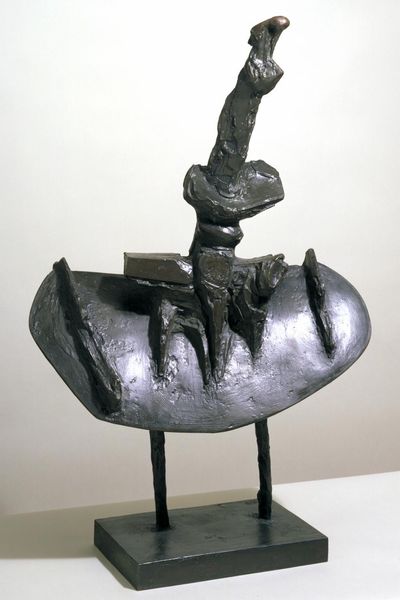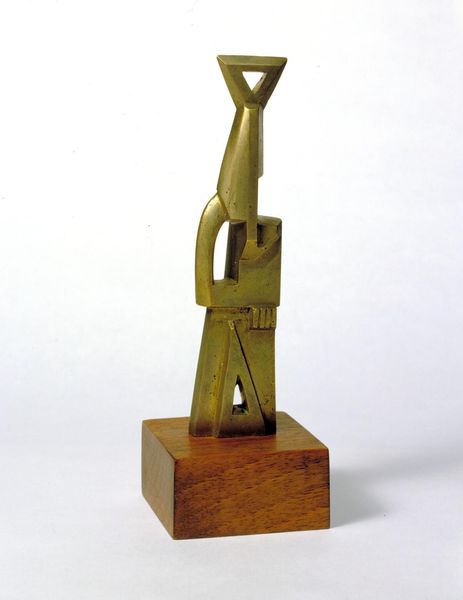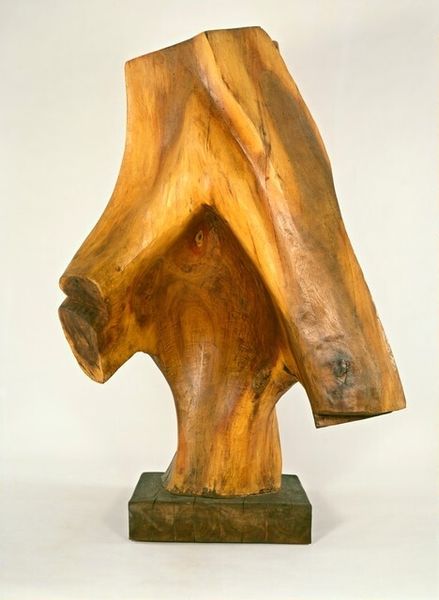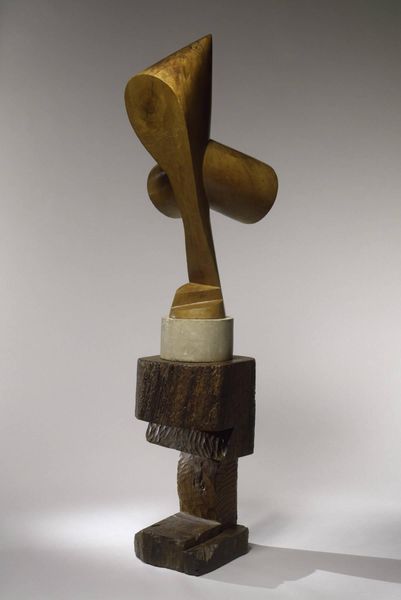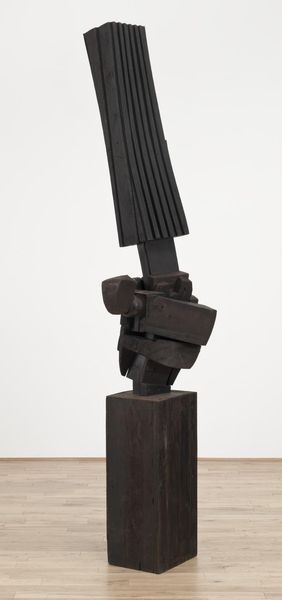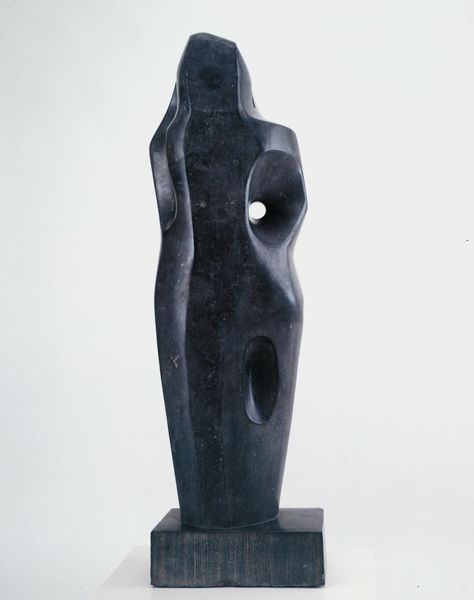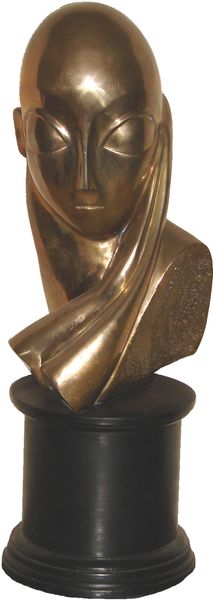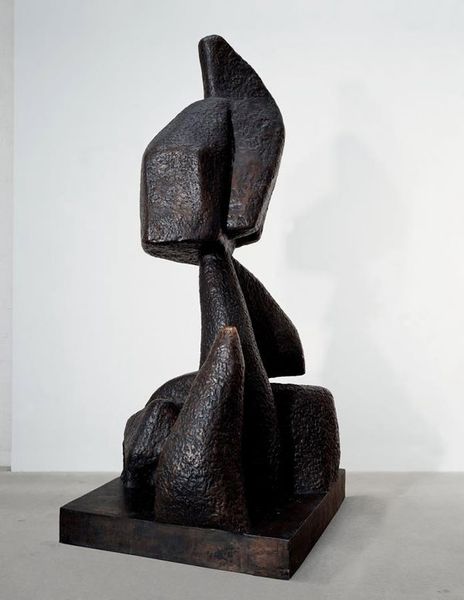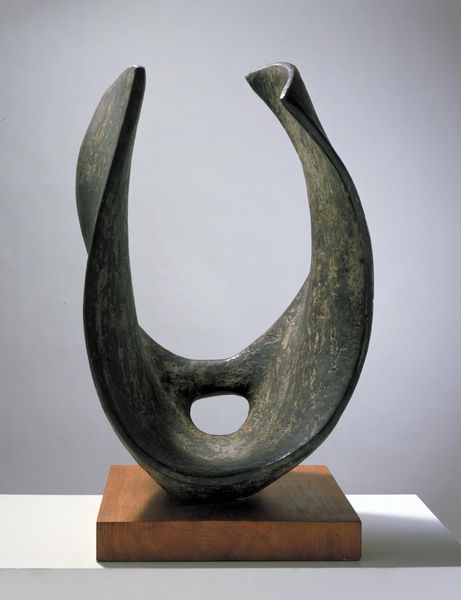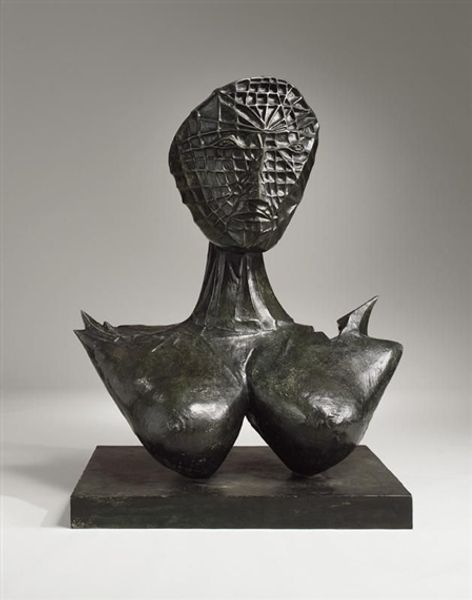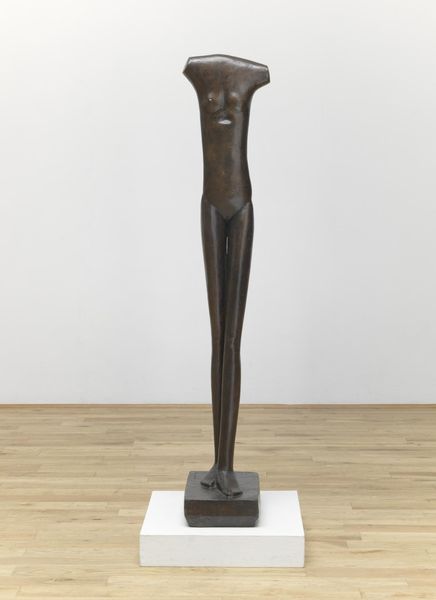
bronze, sculpture
#
sculpture
#
bronze
#
geometric
#
sculpture
#
abstraction
#
statue
Copyright: Ion Alin Gheorghiu,Fair Use
Curator: Here we have Ion Alin Gheorghiu's bronze sculpture, "Chimera." While its exact date is unknown, it presents an intriguing study in abstract form. Editor: My first impression is a sense of sturdy awkwardness, but in a way that's appealing. The shapes are so geometric, so simplified, and the bronze lends it weight and permanence. It almost looks like a stylized, wingless creature trying to take flight, trapped in its medium. Curator: The title "Chimera" is fitting, hinting at a composite being, perhaps reflecting the socio-political atmosphere. This feels like it engages with the discourse around national identity in Eastern Europe, playing with fractured histories to ask us what forms truly endure. Editor: Absolutely. Considering bronze as a material, and how historically it has been associated with power, weaponry, even commemorative works, it becomes really compelling. The artist makes active material choices – I wonder how the piece was cast? What was the artist thinking about during the actual process? Curator: That focus on craft connects back to a broader reassessment of artistic value. Museums historically valued certain techniques – oil painting and marble sculptures. Gheorghiu using bronze, an industrial material and potentially playing on themes related to post-war monument design, opens avenues to consider those biases, asking viewers who or what the art world traditionally enshrines in a monumental work. Editor: The way the surfaces interact with light also grabs me. Some are smooth, reflecting light beautifully, while others retain a rougher, almost industrial texture. You feel a tension there, between the refined object of art and something more... primal. The base also makes one focus on the presentation. Curator: Indeed, how art institutions elevate particular artworks onto a figurative – and sometimes literal – pedestal shapes audience reception significantly. Placing "Chimera" in this space affects the cultural narrative. This may not only speak to how art can legitimize social identities but to the ways the material realities inform it as well. Editor: It is thought provoking. It pushes beyond what one thinks they know. Curator: I agree, it certainly offers much to think about.
Comments
No comments
Be the first to comment and join the conversation on the ultimate creative platform.
